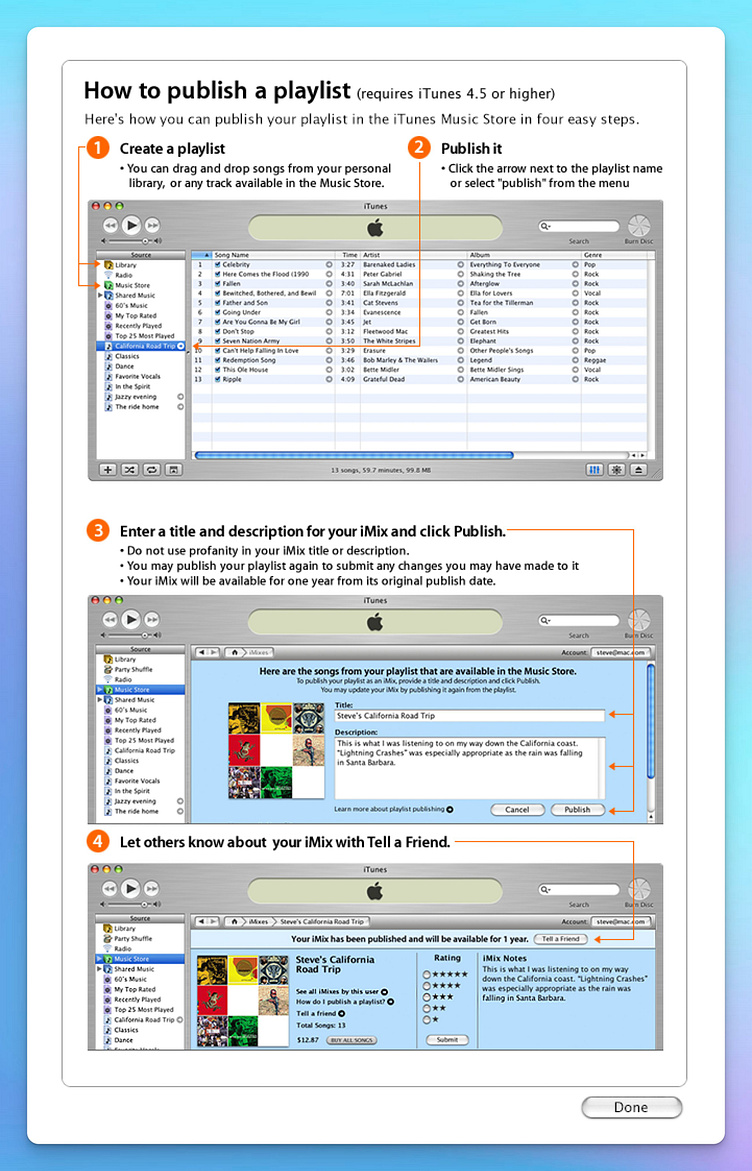The genesis of playlist sharing (iMix)
In the thick of my years at Apple, I had the distinct opportunity to work on a project that, although strenuous in its inception, would change the landscape of music sharing forever. That project was iMix.
The genesis of playlist sharing was not without its challenges. Designing a platform that could seamlessly integrate with iTunes, sensitively handling curated content as a precious resource, and maintain a people-friendly interface was no small feat. There were nights where the magnitude of what I was attempting to design weighed heavily on me. At its core, I believed in the potential of iMix to be the spark in how we'd learn to consume and share music.
Before iMix, music was a primarily individual experience. You'd buy an album, maybe share it with a friend or two, but the broader communal aspect of music was missing in the digital age. With iMix, I wanted to bridge that gap and make music social.
The idea was simple: allow people to curate their playlists and share them with the world. In doing so, music enthusiasts could connect over shared tastes, discover new artists, and deepen their appreciation for different genres. But more than that, it made personal curation an art. A well-crafted playlist became a badge of honor, a reflection of one's musical journey.
As iMix took off, I began to see the ripple effect of the platform. It wasn't just about sharing songs; it was about sharing experiences, memories, and emotions. Music lovers from all over began to connect in ways they hadn't before. They weren't just passive listeners; they were active participants in a global musical dialogue.
In the end, though the journey to bring iMix to life was arduous, the result was transformative. I had unknowingly paved the way for an entirely new form of social music interaction. And as people began to recognize the impact of iMix, I earned a title I hadn't anticipated but wear with honor: the "grandfather of playlist sharing."


